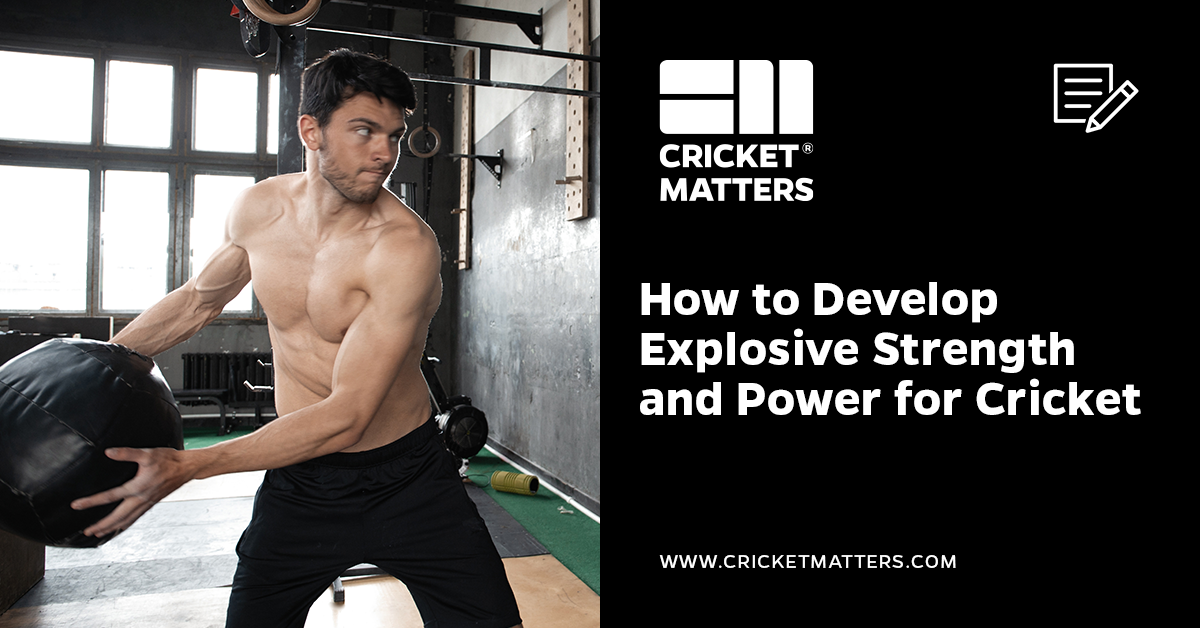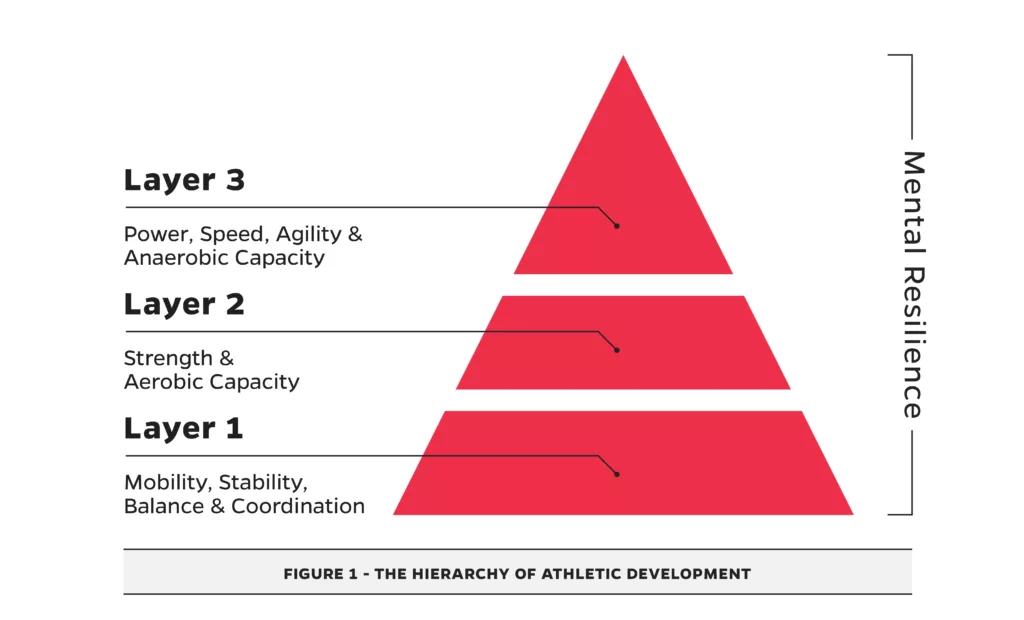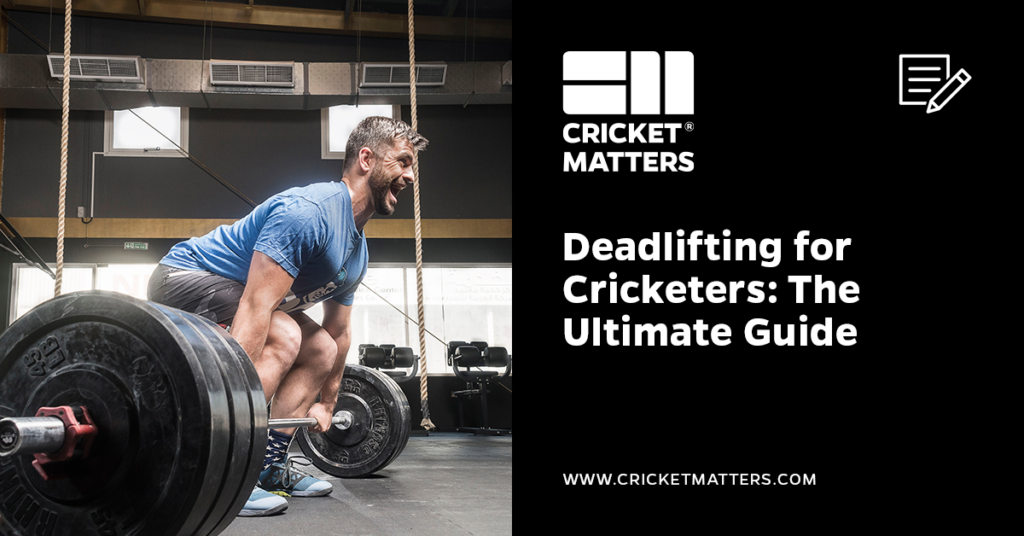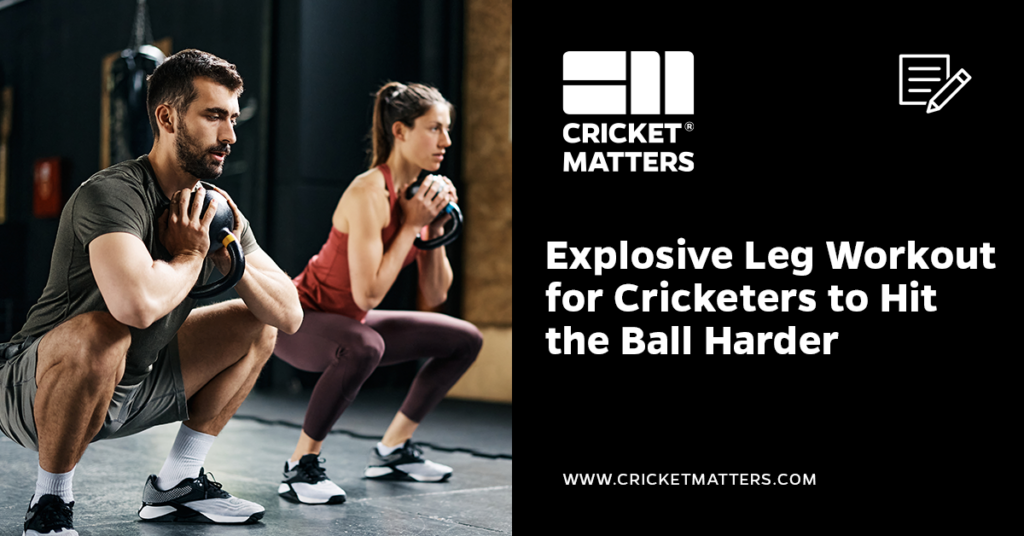
I hope you enjoy reading this blog post.
James Breese, Cricket Matters FounderIf you need my help with cricket coaching, strength and conditioning, injury rehab, or nutrition, click here.
This is a practical, actionable, insightful, and in-depth guide to help cricketers develop explosive strength and power based on my personal experience as a fitness professional.
It’s more of a think piece, sharing our philosophy on developing powerful, explosive cricketers.
If you would prefer a list of all the best plyometric exercises we do with our athletes, you can also check out this article: 24 Essential Plyometric Exercises for Cricket.
You can also read our favourite Strength and Power Exercises Every Cricketer Should Do.
That being said, let’s dive into the theory.
Table of Contents
Explosive strength and power play a crucial role in the success of a cricketer.
Whether you’re a fast bowler looking to generate more pace or a batsman looking to hit the ball further, having a strong and powerful body can give you a competitive edge.
But how do you go about developing this type of strength?
In this article, we’ll explore the best exercises and techniques to help you boost your explosive power and improve your game on the cricket field.
Get ready to take your performance to the next level.
Introduction
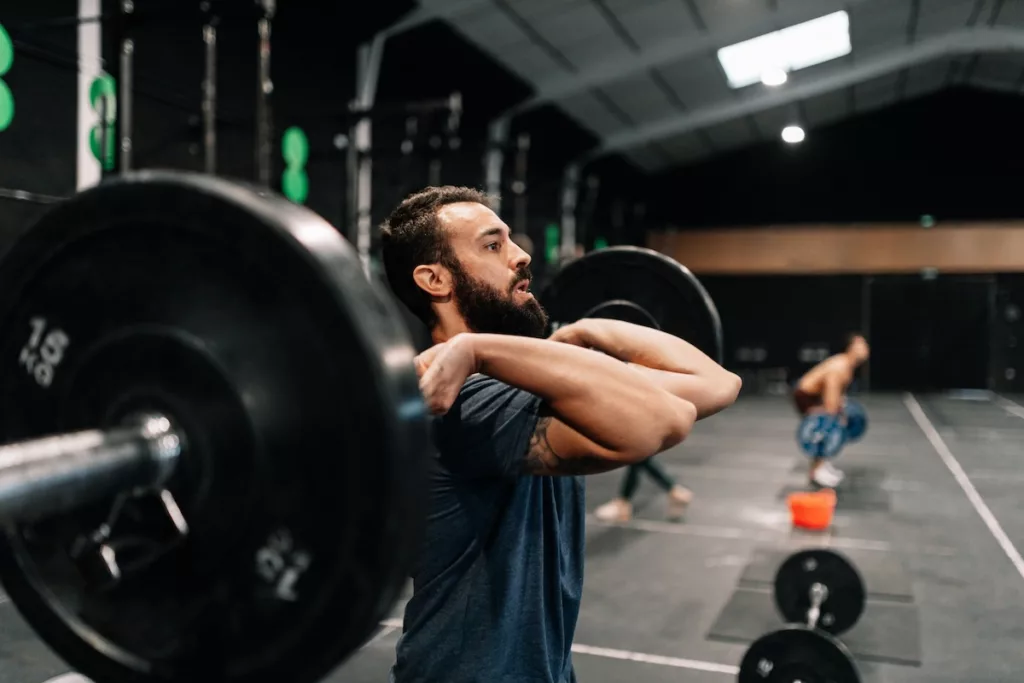
If you watch fitness marketing videos closely, you’ll see they have many things in common.
They all show people sweating profusely and working hard, and they tend to sprint or jump up and down off big boxes.
This is how the media machine tells us we should be working out – because it’s sexy and cool and gives us the impression that we can train like an elite athlete or even become one.
I get it, so don’t worry. I want to become one, too!
Those videos also lure me in, so don’t feel bad.
The reality is this couldn’t be further from the truth.
Most cricketers are not ready to perform those circus tricks – well, not yet, anyway.
Powerful, explosive movements and plyometrics absolutely have a place in a cricketers training plan, but at the right time and the right place in their athletic journey.
Implementing this type of work too soon will only lead to issues that will leave you frustrated, fed up, and even further away from your original training goals.
Most cricketers are deconditioned due to modern society and the game’s impact on their bodies.
They lack the prerequisite mobility, stability, and balance to move appropriately, and most are not strong enough physically or aerobically to even attempt these advanced athletic feats.
Yet, look around the world right now; go to any big commercial gym, and you’ll see people of all shapes, sizes, and ages doing box jumps, hurdle hops, and weighted jump squats.
Today, I want to set the record straight on plyometrics and share how we approach speed, explosive power, and plyometric work with cricketers.
The Importance of Speed, Strength and Power

In sports, if two athletes are of equal skill, the fastest and most powerful is often the winner.
Think about your favourite cricketers.
What sets them apart from their rivals? Look beyond their skills as a cricketer.
So, in terms of sports, speed, strength, and power are not just important; they’re a necessity.
When it comes to training for speed, it’s all about training for strength and power.
Power is the ability to produce force quickly. If you hit the ground faster with your feet, you’ll produce more force, sending you racing forward. And much faster.
A faster athlete is a better athlete. A stronger athlete is, too.
Why are speed, strength and power so crucial in terms of cricketers?
Let’s look at some common examples to find out:
- Speed, strength, and power can help cricketers generate more force and velocity while throwing, leading to faster throwing distances and a more significant impact on the field.
- Quicker movements can give batsmen more time to make decisions and adjust to the ball, increasing their chances of a successful shot or stopping it in the field.
- Powerful fast bowlers can bowl faster and challenge batsmen with quicker deliveries, making it more difficult for them to score runs and increasing the chances of getting them out.
- Stronger players can hit the ball harder, leading to more sixes and fours, and bowl with greater pace and control.
- Improved speed, strength and power can also lead to better fielding, allowing players to cover more ground and make quicker, stronger throws to effect run-outs and catches.
- For spinners, speed and power can increase the velocity of the ball, making it harder for batsmen to pick up the rotation and trajectory of the delivery when bowling.
- Spinners with quicker arm speed can create more revolutions on the ball, increasing the chances of getting a batsman to play a false shot.
- Stronger shoulder and wrist muscles can allow spin bowlers to impart more spin on the ball, making it harder for batsmen to judge the bounce and trajectory of the delivery.
The list could go on, but you get the point, increased speed, strength and power makes everything better on the cricket field.
You also have to remember at some point in our 30s, we all start to lose muscle mass and function. The cause is age-related sarcopenia.
Physically inactive people can lose as much as three to five percent of their muscle mass each decade after age 30.
Even if you are active, you’ll still have some muscle loss.
Sarcopenia typically happens faster around age 75, but it could speed up as early as 65 or as late as 80.
This condition is a huge contributor to frailty and the likelihood of falls and fractures in older adults.
The loss is greatest in the Type II fiber population, or “fast twitch” fibers. The loss of Type II fibers affects total strength as well as speed of movement.
Therefore, the combination of loss of strength and power, and greater loss of fast twitch fibers decreases the ability to exhibit muscular power in our older population.
And remember, we want to keep playing for as long as possible. Well, I do anyway.
As cricketers, we train for strength and power so that we can also mount a meaningful offense in the ever present war against injury and aging, ensuring we can continue playing for as long as possible.
Strength and power are huge factors in ensuring your quality of life in the game remains high as you age, and that you have longevity in the game.
The importance cannot be underestimated. I want to see you play well intor your 50s and 60s.
However, training for speed, strength and power require advanced methods.
In order for these to be done safely, you will need to be beyond beginner level in terms of your strength.
If we look at it through the lens of our athlete performance pyramid, speed and power are Layer 3 qualities.
This means we need to own all the qualities in Layer 1 and Layer 2 first. That means strength first. There’s a difference.
Are You Physically Ready for Advanced Speed, Strength and Power Work?
This is one of the most important questions you need to ask yourself, and you need to do so objectively.
This is why we created our assessment system – to take emotion out of the training equation.
Layer 3 or advanced speed and power work is high risk training for individuals who don’t move well, are not strong enough. or who do not have the aerobic capacity to recover quickly.
If you don’t have those qualities nailed down, you simply won’t reap the benefits of this type of training.
To give you an idea of the assessments we look at before we even consider allowing someone to train for speed, strength and power, or when to use plyometric work, here are a few examples:
Balance Assessments
Test: Single Leg Balance Left and Right
Directions: Stand on your LEFT leg. Place your arms out to the side, and your RIGHT leg out in front, lightly touching the floor. Close your eyes, raise your RIGHT leg and start the timer. Stop the timer as soon as you either open your eyes or put your RIGHT foot down.
Baseline Standards: 30 seconds each side
Strength Testing
Test: Trapbar Deadlift
Directions: Using a conventional barbell perform a deadlift up to a maximum of five reps using the weights outlined: Men: 1.5 x Bodyweight, Women: 1.25 x Bodyweight
Baseline Standard: 5 reps
Test: 50% Bodyweight Kettlebell Front Squat
Directions: Using two kettlebells in the rack position so it weighs the same as half your bodyweight. Perform as many reps as possible, up to a maximum of 25, ensuring you go below parallel on each repetition.
Baseline Standard: 25 reps
Test: 75% Bodyweight Farmer Carry
Directions: Pick up two weights equalling 75% of your total bodyweight and walk for 90 seconds WITHOUT having to put either weight down or re-gripping at any point.
Baseline Standard: 90 seconds
The single leg balance test tells us a lot about your proprioceptive awareness underfoot.
Proprioception is the sense that lets us perceive the location, movement, and action of different parts of the body.
It enables us to judge limb movements and positions, force, heaviness, stiffness, and viscosity.
It combines with other senses to locate external objects relative to the body and is closely tied to the control of movement.
How many people do you know that have sprained, rolled, or broken their ankle during running or jumping exercises?
If the foot cannot feel or sense danger while running, you are considerably more likely to roll and injure your ankle.
Good balance is non-negotiable in our eyes prior to speed, power, and plyometric work.
The deadlift and squat standards are not elite by any stretch of the imagination; however, it is important that we achieve these baseline levels of strength first as, when it comes to plyometric work, we’re essentially jumping and dropping from higher heights.
The shock from these drops can be three to four times a person’s bodyweight.
The same can be said for sprint work: Every time your foot hits the ground when sprinting, you experience a force of three and a half to five and a half times your body weight.
It’s not included in the tables above, but we also use the waist-to-height ratio as a litmus test to see if it is safe for your body to support that force.
For those unfamiliar with this measurement, your waist-to-height ratio is calculated by dividing waist size by height, in either inches or meters.
If your waist measurement is less than half your height, or a ratio under 0.5, you’re likely not at risk for obesity-related disease and it’s likely safe to perform speed and power work.
If you have a waist-to-height ratio over 0.5, we see this as a significant risk factor to long term health and performance.
It does not mean we don’t see you doing plyometric work ever; it is merely a safety measure to ensure that when you do start, you’ll enjoy years of pain-free training ahead.
To give just one example, let’s take a quick look at body mass.
If two everyday athletes perform a plyometric jump/drop from a 30cm box, but Athlete A is 60kg and Athlete B is 80kg, then Athlete B has to absorb and re-apply more force than Athlete A simply because of their weight.
This demonstrates how the intensity of plyometric activity is different for each individual athlete.
In terms of strength, I’m most interested in this milestone test:
The 75% Bodyweight Farmer Carry is one of the most important tests we do, as it shows us whether or not you’re able to maintain alignment with integrity under load.
The ability to maintain integrity under load is more important than the ability to lift load.
Working muscles without using postural stabilizers lead to poor alignment and poor stability, yet most people train their lifts more than their carries.
In my eyes, passing the standard for this test is non-negotiable prior to implementing any type of speed, power, and plyometric work.
In the world of coaching, rule #1 is do no harm.
Helping someone achieve this standard, as well as the standards listed above for the other assessments, in conjunction with the ability to move well, is the best way to mitigate the risk of injury and exponentially increase the results an individual will get from this type of work.
If you fall short of any of these assessments, my professional advice would be to avoid anything in Layer 3.
You would be best served by building your strength reserves in Layer 2.
But, if you can comfortably hit these standards, then the next step in your journey is plyometrics.
An Introduction to Plyometrics
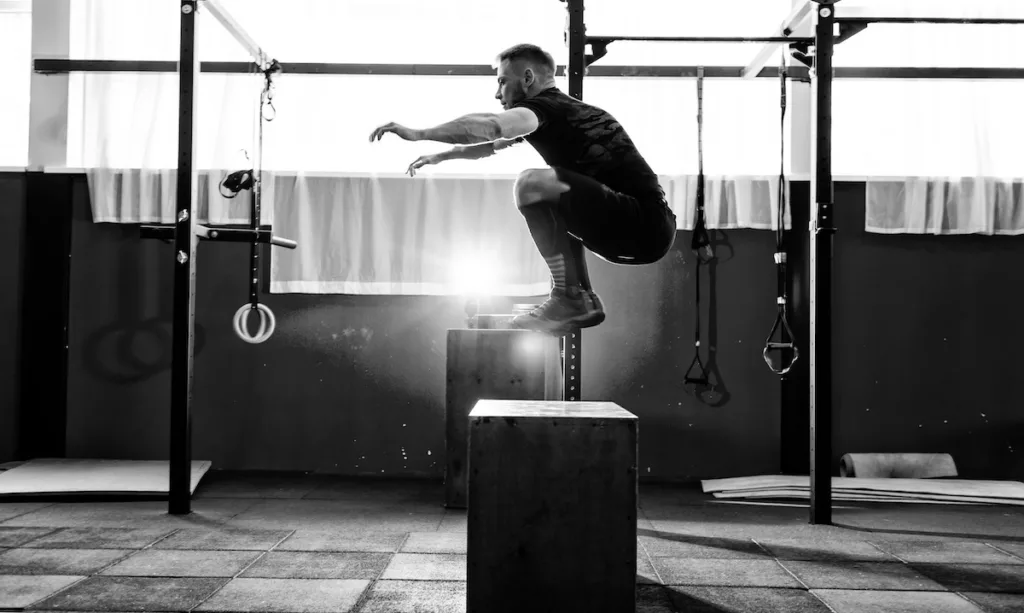
Plyometrics are NOT for improving conditioning or endurance, contrary to popular belief.
They are specifically designed to improve reactive strength, explosive strength, and the like.
Plyometrics offer a wide array of benefits ranging from improved vertical leap, improved sprinting speed, improved ability to absorb force, and increased agility.
Plyometrics will help develop the explosive factor that cricketer athletes need.
It conditions both slow twitch and fast twitch muscle fibers and helps make ligaments and tendons stronger reducing the risk of injury.
Plyometrics can be separated into two different categories:
- Maximal Plyometrics: This includes solely depth and drop jumps. These low repetition exercises are designed to recruit maximal or near maximal tension in the muscles.
- Sub-maximal Plyometrics: These activities are designed to teach the body the skills required at lower intensities. Lower box heights can be used or exercises such as skipping, jumping, hopping, or bounding.
The vast majority of cricketers will primarily use sub-maximal plyometrics, and most club cricketers will have to spend years of training just to achieve this feat.
Maximal plyometrics are elite athlete territory. If you’re not sure you should be doing them, then the answer is probably no you should not.
When introducing people to sub-maximal plyometrics, we tend to follow this order of development:
- Jump Rope
- Power Skipping
- Vertical Jumps (two legs)
- Long Jumps (two legs)
- Lateral Jumps (two legs)
- Tuck Jumps
- Single Leg Hops
- Single Leg Lateral Hops
- Bounding
- Box Jumps
Please note box jumps are last on the list! We have to ensure we prepare the body for this type of work.
I know, it’s not what you see at many gyms with every man and his dog performing them but, for longevity and health, and as an intelligent cricketer, there is so much more development you should do prior to jumping up and down with a box that is far more beneficial to your athletic development.
When programming plyometrics, we always ensure they are performed at the beginning of the workout, after the warm up and activation stages.
Volume for beginners should be kept between 20 and 30 reps total, and each jump should fall between three and six reps per set.
The emphasis the entire time should be on learning how to absorb force and drilling mechanics, not how high or how far you can jump.
Once we become proficient at the basics of plyometrics, the next stage we like to introduce is contrast training.
Contrast training is simple: You perform a strength exercise and pair that with an unresisted to lightly resisted power movement similar to the strength movement you performed.
Examples are a deadlift paired with a vertical jump, or kettlebell swings paired with long jumps.
The choices are endless, as is the time frame. With this framework alone, you have a lifetime of workouts at your hands.
Further Reading
Final Thoughts: Strength and Power for Cricketers
Training to be faster and more powerful is the holy grail of cricketing athletic performance. A faster cricketer is a better cricketer.
A stronger cricketer is, too.
However, when it comes to club cricketers and some pros, too, most of us have to earn the right to train speed, strength, and power.
It’s not that we should never train it, but there’s a lot of prep work to get our bodies sufficiently resilient enough to handle the demands of this type of training.
Next time you watch the highlights of your favourite cricketers, ask yourself, “How many years has this cricketer been training to have earned the right to do this?”
My guess will be all of their life.
How long have you been training for?
Further Reading
FAQs
What is Explosive Strength and Why is it Important for Cricketers?
Explosive strength refers to the ability to exert maximal force in a short amount of time. For cricketers, it’s crucial for actions like quick running, power hitting, and dynamic fielding. This type of strength enhances overall performance by improving the speed and power of movements on the cricket field.
What Types of Exercises Help Build Explosive Power in Cricket?
Plyometric exercises, such as jump squats and box jumps, are effective for building explosive power. Sprinting and agility drills, along with weight training focusing on quick, powerful movements like kettlebell swings or power cleans, also contribute significantly.
How Often Should Cricketers Train for Explosive Strength?
Cricketers should incorporate explosive strength training 2-3 times a week. It’s important to balance this with other training elements and ensure adequate recovery time to prevent overtraining and injury.
Can Explosive Strength Training Improve Batting and Bowling Performance?
Yes, explosive strength training can significantly improve batting and bowling performance. Enhanced explosive power contributes to more forceful shots and quicker movements, and for bowlers, it can lead to faster bowling speeds and better agility.
How Do You Increase Strength for Power Hitting in Cricket?
To increase strength for power hitting in cricket, focus on exercises that build core and upper body strength, as well as leg power. This includes weightlifting exercises like deadlifts and bench presses, alongside plyometrics like jump squats. Core strengthening exercises, such as planks and Russian twists, also contribute significantly. Consistent practice of these exercises, combined with proper batting technique, can enhance your power hitting capability.

